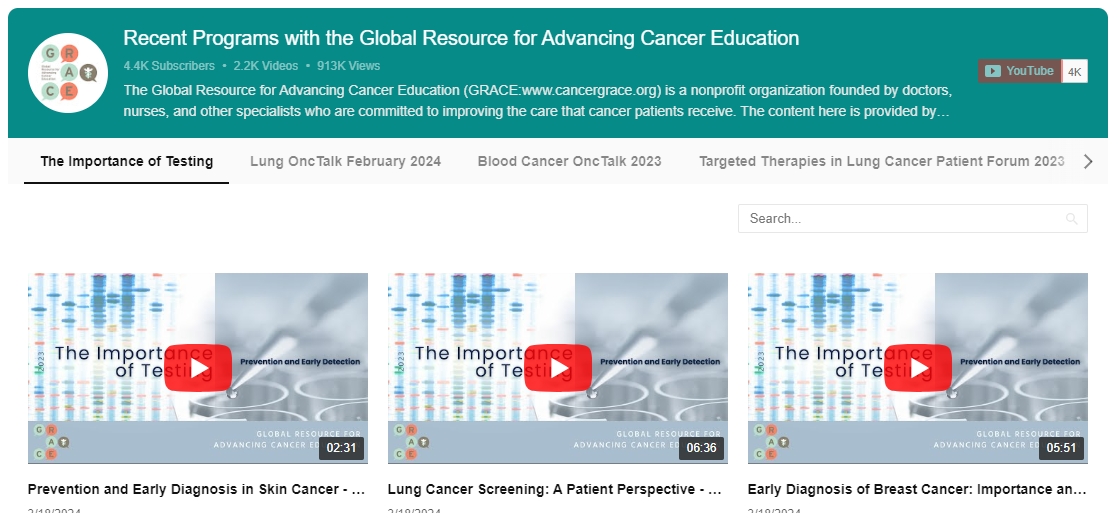Article and Video CATEGORIES

Dr. Jack West reviews new techniques for evaluating mutations from blood, including detection of circulating tumor cells (CTCs) or mutations in circulating free DNA (cfDNA) that can replace at least some tissue biopsies.
[powerpress]
[ratingwidget post_id=0]
Please feel free to offer comments and raise questions in our Discussion Forums.
Transcript
One of the biggest concepts that has transformed cancer care has been the idea of molecular oncology — that there are specific mutations that we can sometimes identify within a tumor that appear to be driving their growth and that if we can find these mutations we might have a specific therapy, a targeted therapy, to go after that very effectively. We’ve certainly seen this in lung cancer where we now have multiple targets and therapies to go after them, things like EGFR, ALK, Ras, and potentially others that are being tested right now. However, all of these approaches require tumor tissue to directly look for these mutations, and we know that there are limitations in that.

One of the leading limitations is that lung tissue is deep in the body and not that accessible, and that creates a challenge. It’s often a challenge just to get the initial diagnosis, and certainly when we need more tissue and more tissue to look for things it can be inconvenient and potentially dangerous with complications when we go after multiple procedures to get tissue.
Another issue is that there is something called tumor heterogeneity as a product of cancer — that cancer is evolving all the time, and because of that a cancer can have different genetics in one part of it versus another and have different aspects in the main tumor compared with lymph nodes nearby or distant metastatic spread. It can have just different colonies that have evolved genetic traits, and it is likely because of that, that we see that cancers don’t have 100% response rates, even if we find a driver mutation and treat them with the specific targeted therapy for that driver mutation.
As one of the new approaches, we are starting to look at liquid biopsies, and this is specifically bypassing the tumor itself and looking in the blood for mutations. This has not yet become widespread and mainstream, but it is on the cusp of being a broadly useful approach, and I think in the next few years will become much more commonly used.

There are two main approaches here. One is looking for circulating tumor cells, and this essentially looks at injecting the blood into a very complicated filter that has lots of obstacles for the cells to go through, and most of the blood cells are either small enough to squeeze through the blockade or are flexible enough to go through all the obstacles. But tumor cells are both large and inflexible, so they get caught up in the filter, and they can be taken out and studied separately.

Another approach looks at something called circulating free DNA and the idea of this is that cells throughout the body are always being broken down, both cancer cells and normal cells, and as they’re being broken down, pieces of their DNA go out into the bloodstream; after a few hours they get cleaned up, but for about two or three hours in the bloodstream is a little signature of the dying and dead blood cells that release DNA. Cancer cells, as they're growing and dividing all the time, will die and release their DNA, and with very, very sensitive molecular techniques it’s becoming increasingly possible to identify the same mutations that we can find in the tumor tissue, now in the bloodstream.

There are issues with the sensitivity of these techniques, but a recent study has shown that about 80% of the cancers that harbor an EGFR mutation by tumor tissue also can have that same mutation picked up in the blood by circulating free DNA that was banked on all the patients in that study, and this is certainly an encouraging way to move on in the future. We may say that 80% is not good enough, but we should also bear in mind that because of tumor heterogeneity, even directly sampling the tumor is not a perfect test, because we might do a biopsy of one part of the cancer and miss the mutation that just happens to be somewhere else or in a different metastasis somewhere else.
So there may not be, and doesn’t seem to be, any perfect test right now, but liquid biopsies, whether by looking for circulating tumor cells or circulating free DNA, both of these techniques are becoming more sophisticated, more sensitive, and likely to emerge in the next few years as a viable approach to looking for different mutations over time.
Please feel free to offer comments and raise questions in our
discussion forums.
Forum Discussions
Hi and welcome to Grace. Wow, I don't know why you can't get in to see your doc but I'd find a way or find another doc who can walk you...
Hi Amber, Welcome to Grace. I'm so sorry you're going through this scare. It could be a recurrence. It also is as likely to be the contrast creating a better view. ...
Hi Blaze,
As much as I hate to say it, Welcome back Blaze. It sounds like you're otherwise feeling good and enjoying life which is a wonderful place to be. ...
Waiting for my appointment with oncologist this morning. Thank you for the response. It helps. <3
It sounds like you’re thinking of this in a very appropriate way. Specifically, it sounds like the growth of the nodule is rather modest, though keep in mind that the change...






Hello and welcome to Grace. I'm sorry you're worrying about this but it probably isn't cancer.
From Adenocarcinoma of the lung: from BAC to the future, "GGNs with diameter...